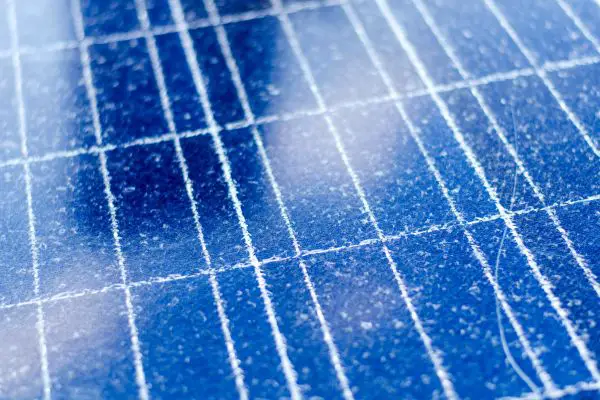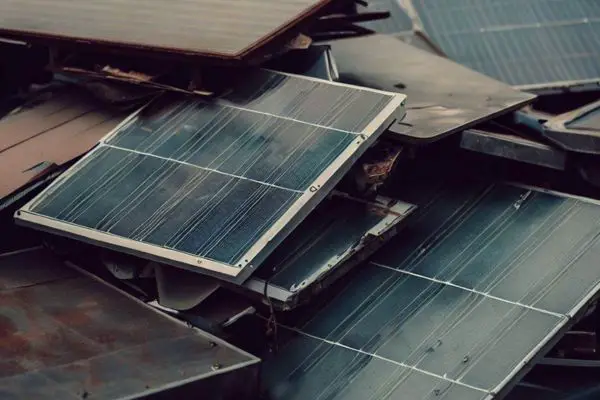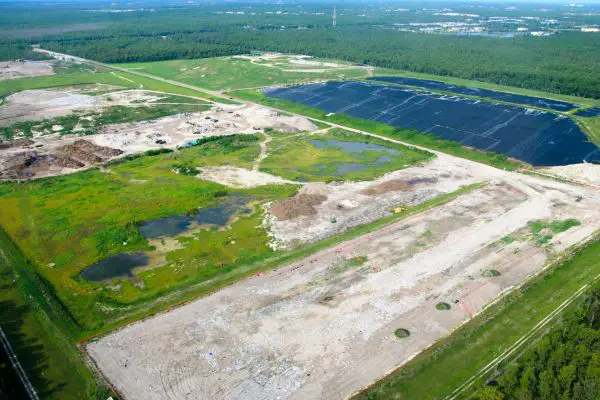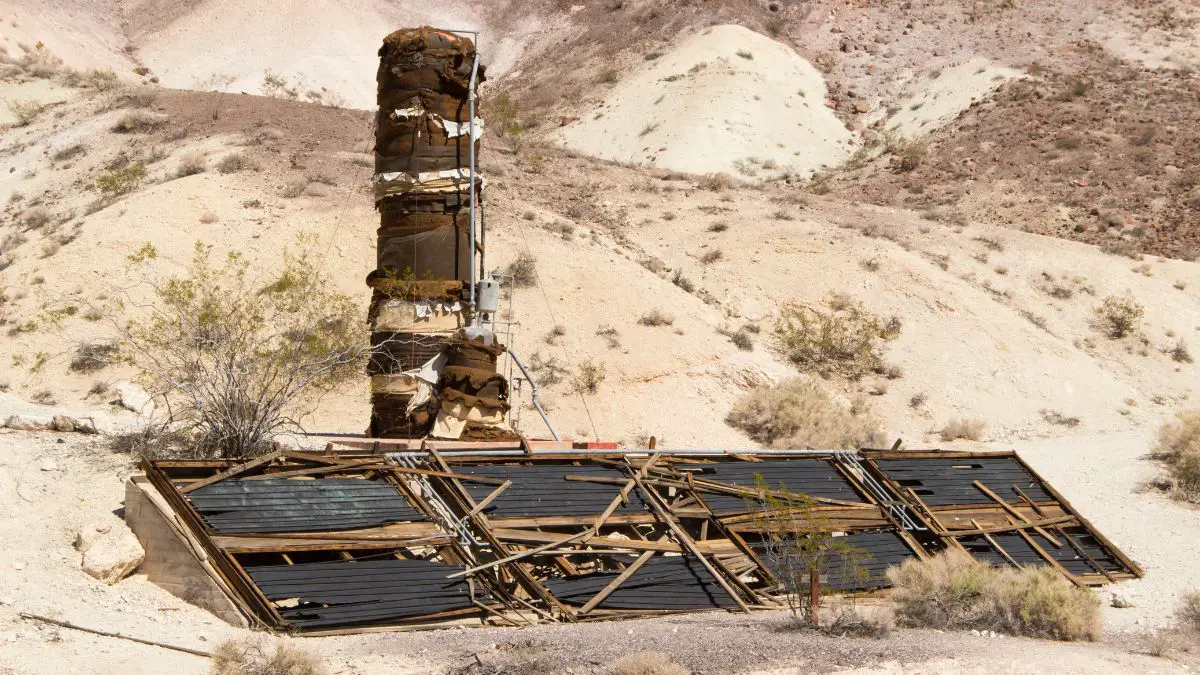How to Recycle Solar Panels: What You Can (and Cannot) Do
With global solar photovoltaic capacity expected to touch 3,000 gigawatts by 2030, the solar market is booming.
But many of us forget to consider what happens to these solar panels at the end of their lifespan.
Consider this: by 2030, around 8 million metric tons of solar panels will cross over their lifespan. By 2050, that number will be close to 80 million tons. That makes proper recycling of end-of-life solar panels an extremely important task.
But that’s where trouble begins. Unfortunately, recycling solar panels is not an easy task. It involves multiple steps starting from collecting and transporting to disassembly and separation of the components.
In this article, we’ll take a deep dive into solar panel recycling to find out what the process involves and what YOU can do about it.
Why Proper Disposal Is Urgent

You might be thinking 2050 is a long way off. But hang on a minute…
The weight estimates for solar panel wastes that I mentioned above are on the conservative side. The estimations of the International Renewable Energy Agency (IRENA) are based on the assumption that customers will use solar panels for their full life cycle, i.e. around 25 to 30 years.
But will we? How many times have you waited for an appliance to exhaust its full working potential before waving it goodbye?
It’s not just about our habits either. In reality, many panels will need replacement much before that period. Also, the repair and reuse options are far too limited to inspire the confidence in users.
So, the actual volume of solar waste will be much higher and the generation rate faster. According to some estimates, by 2035, solar panel junk will surpass the volume of fresh panels being sold.
To add fuel to the fire, the recycling capacity of the industry is still not ready for handling such a deluge of solar trash. Right now, only around 10% of end-of-life solar panels are recycled in the US. And by 2030, the volume of solar panels past their function time period will be large enough to cover around 3,000 American football fields.
That makes the chances of these panels ending up in landfills very high. So high, in fact, that it’s easy to imagine a veritable landfill revival boom, even where landfills are a thing of the past.
But, since many of the panel components are toxic to the environment, that is a scenario we need to avoid.
How Does Solar Panels Recycling Work?

Before we tackle solar panel recycling, let’s briefly discuss what there is to recycle in the first place. (For more details, head over to my earlier piece on solar panel materials!) The primary building block of a common solar cell is a silicon panel in a glass casing and a metal frame.
Glass constitutes around 75% of the weight of c-Si panels, which are still the predominant type on the market. The metal elements in the support are mostly aluminum. Other than silicon, there are also small percentages of polymers and metals like lead, tin, copper, and silver.
When it comes to manufacturing thin-film PV semiconductors, the photovoltaic material used is different. The compounds used are either cadmium telluride (CdTe) or copper indium gallium diselenide (CIGS).
What does this mean?
The recycling of the primary components like glass, metal, and copper wiring in the panels is relatively easy. But the recycling of silicon cells needs special processes. Not only does it need high amounts of energy, but the tiny impurities left in the element can lead to a drop in quality.
To make matters worse, the policy makers still don’t seem to be fully aware of how serious the situation is. As of 2023, only a few states in the US have passed laws and regulations to deal with solar panel waste. On the other hand, the European Union laws have made solar panel recycling mandatory for manufacturers.
According to the EPA, solar panels with higher quantities of metals like lead and cadmium in them are no less than hazardous waste. But the panels need to pass the Toxicity Characteristics Leach Procedure test (TCLP test) to be classified as hazardous waste. If so, the handling needs to be done as per the Resource Conservation and Recovery Act (RCRA).
Steps in Solar Recycling
What makes solar panels difficult to recycle?
The answer lies in the tough weatherproof design that keeps the panels functioning for years. Quite simply, they are not designed for easy de-manufacturing. The bonding of solar cells with multiple layers of EVA lamination makes the process even more difficult.
There are various recycling processes for solar panels and the majority of them involve a combination of high-temperature thermal and mechanical processes. Moreover, the purity of the recovered materials is on the lower side, resulting in lower prices for the finished products.
The first step towards recycling solar panels is the process of collection. Note, solar panels are bulky equipment, and the glass is likely to shatter if not handled carefully. What this means is you can’t just climb the roof with a handful of tools and dismantle the panels. You need to use skilled labor to bring the panels down from rooftops and load them in trucks.
Next, the panels are separated from the metal frames and disconnected from the electrical boxes and wiring. The glass is separated from the EVA lamination and the solar cells by using special machines.
Some recyclers burn the EVA and other polymers by pyrolysis or dissolve them in organic solvents. But, you guessed it, this process isn’t free of issues either! Pyrolysis involves higher temperatures and consumes high energy. And the use of solvents results in the generation of hazardous wastes.
In some processes, the entire cells are crushed into smaller pieces in hammer mills. These pieces are sorted by passing them through a leach drum and a vibrating screen. This also separates the glass from the lamination. The glass is then rinsed and passed to recycling containers. The rinse waters are pumped into a precipitation system to recover any residual heavy metals.
The metal components undergo a three-stage precipitation process. This generates a solid residue of metal compounds which is used for recovering raw materials like silicon. Metals like silver and copper get extracted by electrochemical processes.
The price isn’t insignificant either. While reusing old silicon wafers can reduce the carbon footprint of the solar industry significantly, not many companies are willing to use old materials for new panels. The main reason is, recycled silicon contains traces of silver, aluminum, and even boron. And solar-grade silicon requires a purity of 99.9999%, which makes it expensive.
Of course, technologies for recycling thin-film cadmium-telluride solar panels are still being developed. The challenge is to make the costs of the recovery process competitive.
Bottom line, we have grounds for mild optimism over the next decade or so. But we’re not there yet.
How Much Does Proper Disposal Cost?

By this point, you’ve probably got the message: the main reason for the low recycling rate of solar panels is the hefty price tag. The current solar panel recycling technologies are just not optimized to ensure cost-effective recovery.
As if that weren’t complicated enough, the variations in solar cell compositions and cell efficiency variability also make the component extraction process difficult.
Since the panels have very low quantities of high-value materials like silver, the interest in investment in recycling technology is not strong. To develop an economical end-of-life infrastructure for solar panels, government subsidies are the only way.
Beyond that, the non-availability of local recycling facilities also affects the cost of recycling. Transportation of the panels to distant facilities raises the costs. In case the panels are classified as hazardous waste, there are more restrictions on transportation. This raises the overall costs and reduces the margins.
And you know what?
For most solar companies, the cost of extracting raw materials is more than buying new materials. According to a 2021 estimate, the cost of recycling a solar panel is between $20–$30. In contrast, using the same panel as a landfill will cost a paltry $1–$2.
The question is, who will bear the recycling costs before it’s too late?
Experts suggest that it is necessary to create a recycling fund by making the panel manufacturers pay for the generated waste. This will promote the growth of a “renewable-energy-circular-economy” by allowing lifecycle management companies and third-party recyclers to expand their services.
“It’s far more cost effective for manufacturers to be forced to work together, to own recycling facilities in a joint fashion, where they try to greatly reduce the cost of all that collectively. That happens through policy. It doesn’t happen through people opting in,” says Jigar Shah, the Director of the Loan Programs Office at the U.S. Department of Energy.
On the other hand, Cara Libby, senior technical leader of solar energy at the Electric Power Research Institute (EPRI) feels that regulations have made a difference in Europe. “I’ve heard that it will have to be mandated because it won’t ever be economical,” she explains.
The good news is, new recycling technologies are being developed for better management of photovoltaic module reutilization. Another option is using materials like perovskite to manufacture solar cells. Made mainly from lead, perovskite solar panels are easier and cheaper to recycle.
Beyond that, organizations like Solar Energy Industries Association (SEIA) are taking active states for end-of-life management by promoting the best recycling practices. They can provide repair, refurbishment, and resale services to solar installers and system owners.
What Happens When Solar Panels End up in the Landfill
Most panels end up in general-purpose glass recycling facilities where the metal components get treated as scrap. The other common outcome of solar panel disposal is precisely the one that’s most dangerous: using them as landfill.
And that’s where economic disparity between different parts of the world kicks in. Unfortunately, many recyclers sell second-hand solar panels of lower quality to developing countries. Such nations do not have enough or any regulations to control solar cell waste. So over the long run, the environmental effects of using them as a landfill add up to an even graver outcome than immediately obvious.
While older panels are not dangerous for the environment directly, damaged panels can cause the leaching of some harmful materials. However, there is a lack of consumer awareness about the toxic effects of solar panels on the environment.
The acidic environment of the soil can break down the protective layers of the buried panels. Research has indicated that heavy metals can be released from such thin-film solar panels.
As many as 16 types of metals can be released from a solar panel buried in the soil. Elements like lead or carcinogenic cadmium get carried away by rainwater and sink into the groundwater. This also affects soil fertility.
According to cancer biologist David H. Nguyen, what’s toxic in solar panels includes “cadmium telluride, copper indium selenide, cadmium gallium (di)selenide, copper indium gallium (di)selenide, hexafluoroethane, lead, and polyvinyl fluoride. Additionally, silicon tetrachloride, a byproduct of producing crystalline silicon, is highly toxic.”
So How to Get Rid of Solar Panels?
The fact is, you can’t recycle solar panels on your own. When your solar panels are past their functional date, get in touch with the company that sold them. They can advise you about disposing of them in the right manner. Some manufacturers can also pick end-of-life panels up if they have their own recycling plant.
If your panels are old and you want to replace them with more efficient panels, you can sell them off in the second-hand panel market. The other option is to give them away to friends who might be interested to install solar panels on a budget.
Often the panels can get damaged and the glass surface might get cracked. Keep in mind that solar panels can be repaired. You can get in touch with the manufacturing company or can try out some DIY options to fix the damage.
Conclusion
While the shift to renewable energy sources like solar panels or is a necessity, we cannot afford to neglect the waste generated from it.
In the coming years, the need for solar panel recycling will rise drastically. So, we need a plan in place to handle this trash, some of which can be toxic. The strategy needs to ensure the best possible recycling-based resource recovery from solar panels.
Efficient recovery and reuse of solar panels can not only reduce environmental impacts but also deliver economic benefits to solar industry stakeholders. Other benefits include better supply chain stability and more job opportunities.
Till now, the question of how to handle millions of tons of solar scrap has not been addressed properly. It’s time for solar businesses to aim for recycling to ensure that the solar panels remain sustainable for a long time.






